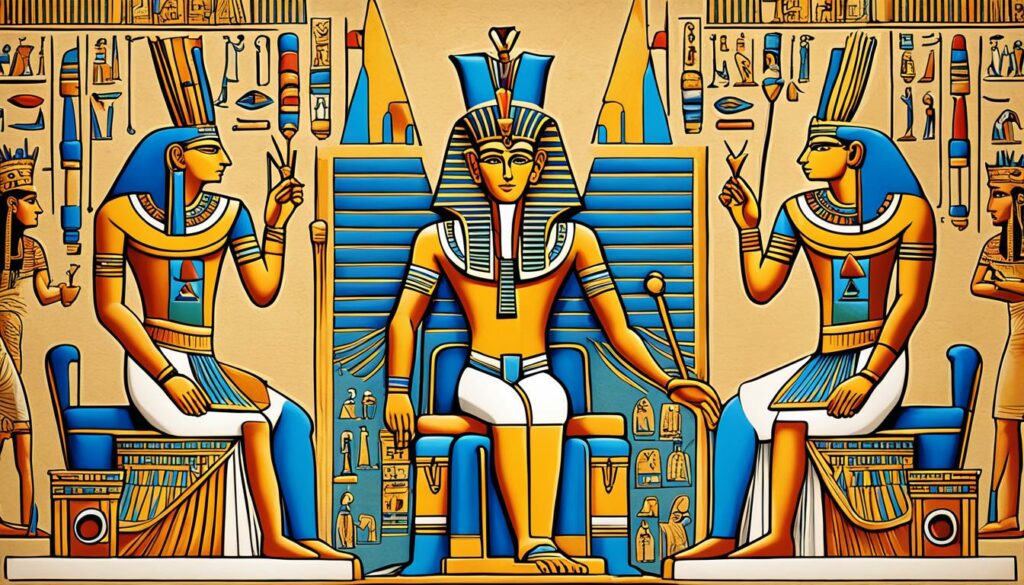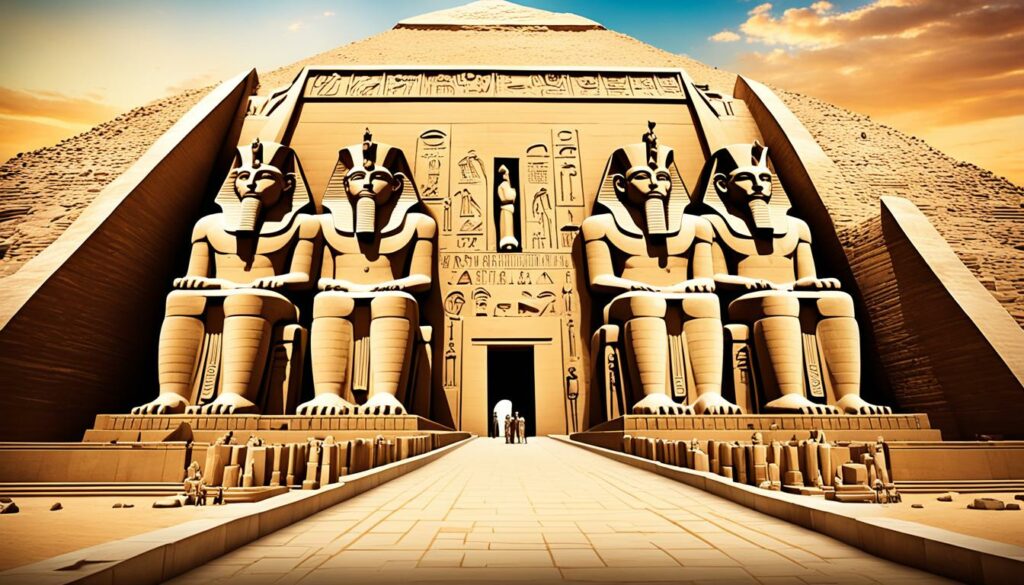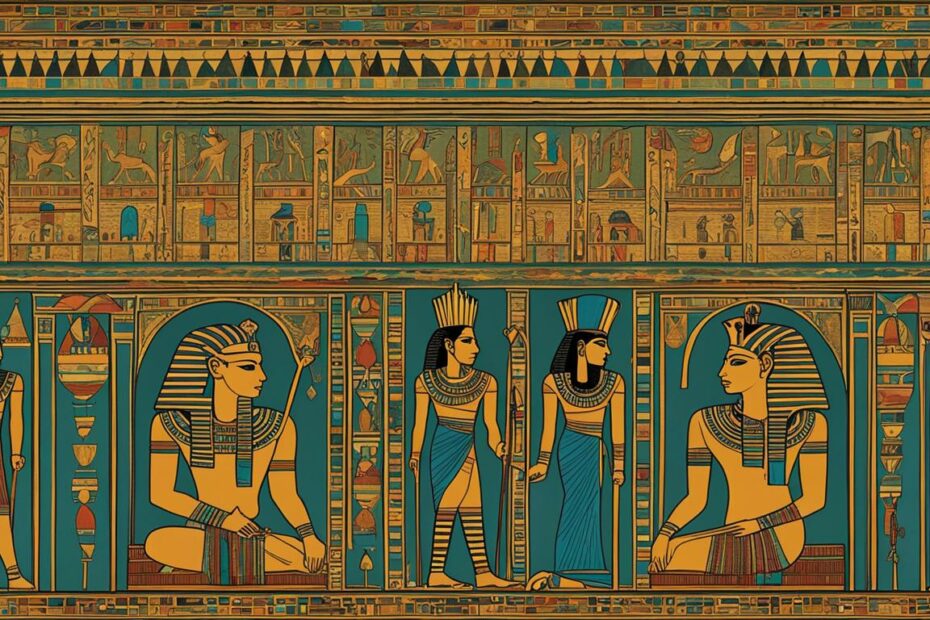What does the term “dynasty” truly mean in the context of ancient Egypt? Explore the ancient Egyptian dynasties, the ruling families that shaped the course of history, and the intriguing secrets behind their supremacy and downfall. Unravel the mysteries of the pharaohs, the remarkable achievements they left behind, and the challenges they faced in maintaining their dynastic rule.
In ancient Egyptian history, dynasties were series of rulers who shared a common origin and held power for a significant period of time. These dynasties played a crucial role in shaping the history and civilization of ancient Egypt. The dynastic system consisted of over 30 ruling families, known as pharaohs, who held supreme power and were often considered gods. Dynasties provided stability and unity to Egypt, although there were periods of infighting and foreign invasions that led to the downfall of certain dynasties. Understanding the significance of dynasties in ancient Egypt is essential to comprehending the country’s rich history and cultural heritage.
Join us on a journey through time as we delve into the hierarchy of dynasties, the remarkable achievements of ancient Egyptian dynasties, the challenges they faced, and the lasting legacy they left behind. Discover the secrets of ancient Egypt and gain valuable insights into one of the world’s most fascinating civilizations.
The Hierarchy of Dynasties in Ancient Egypt.
In ancient Egypt, the dynasties were divided into different periods, each with its own set of ruling families. These dynasties held the power and authority in ancient Egypt, shaping its political and social landscape. Understanding the hierarchy of dynasties is crucial to comprehending the complexities of ancient Egyptian history.
The Old Kingdom
In the Old Kingdom, which lasted from approximately 2686 to 2181 BC, several prominent dynasties ruled over Egypt. The Third, Fourth, and Fifth dynasties are regarded as the most influential during this period. They were responsible for constructing the iconic pyramids at Giza, including the Great Pyramid of Khufu, one of the Seven Wonders of the Ancient World.
The Middle Kingdom
The Middle Kingdom, spanning from approximately 2055 to 1650 BC, was a pivotal period in ancient Egyptian history. The Eleventh and Twelfth dynasties rose to power during this time. They successfully reunited Egypt after a period of disunity and established a more centralized ruling system. This era is known for significant cultural and artistic achievements, as well as territorial expansion.
The New Kingdom
The New Kingdom, often considered the golden age of ancient Egypt, lasted from approximately 1550 to 1077 BC. It was during this period that Egypt reached the peak of its power and influence. The Eighteenth, Nineteenth, and Twentieth dynasties were the dominant ruling families during this time. They witnessed the reign of legendary pharaohs like Hatshepsut, Akhenaten, and Ramses II. The New Kingdom saw military conquests, monumental construction projects, and advancements in art, architecture, and religion.

The hierarchy of dynasties in ancient Egypt demonstrates the transition of power from one ruling family to another throughout different periods. This system allowed for the continuity and stability of ancient Egyptian civilization. By studying the dynasties, archaeologists and historians gain insights into the political, social, and cultural aspects of this remarkable ancient civilization.
Achievements of Ancient Egyptian Dynasties.
The ancient Egyptian dynasties were responsible for an array of remarkable achievements that continue to awe and inspire researchers and historians today. The pharaohs of these dynasties oversaw the construction of monumental structures that have become iconic symbols of ancient Egypt’s grandeur, such as the pyramids at Giza, the Sphinx, and numerous temples.

In addition to their architectural prowess, the pharaohs of ancient Egyptian dynasties made significant advancements in various fields. They developed a sophisticated writing system known as hieroglyphics, a complex script consisting of pictorial symbols that allowed for the recording of historical and religious texts. This writing system served as a means of communication and documentation, offering valuable insights into the ancient Egyptian civilization.
Ancient Egyptian dynasties also made noteworthy progress in medicine and science. They developed medical treatments, surgical techniques, and herbal remedies that helped in healing ailments and injuries. The knowledge and understanding gained in these areas paved the way for future advancements in medical practices.
Moreover, ancient Egyptian dynasties played a pivotal role in establishing a complex religious and funerary culture. They created intricate burial practices, including the construction of elaborate tombs and the practice of mummification, which aimed to preserve the body for the afterlife. These religious beliefs and rituals were deeply ingrained in the daily lives of ancient Egyptians and reflected their quest for immortality.
The achievements of ancient Egyptian dynasties extended beyond specific individuals or reigns. Each successive dynasty contributed to the overall cultural, artistic, and architectural development of ancient Egypt, leaving behind a rich and diverse heritage. Their works of art, monumental structures, and scientific advancements continue to captivate and fascinate people worldwide, offering a glimpse into the magnificence and ingenuity of the ancient Egyptian civilization.
Challenges and Decline of Ancient Egyptian Dynasties.
Despite their power and achievements, ancient Egyptian dynasties faced numerous challenges throughout their reigns. Periods of infighting, power struggles, and invasions from foreign powers posed significant threats to the stability of dynastic rule. The presence of rival dynasties and the decline of central authority led to the weakening and eventual downfall of several ruling families.
The Second Intermediate Period serves as a defining moment in the challenges faced by ancient Egyptian dynasties. This period marked the arrival of the Hyksos, a foreign group who invaded northern Egypt. The Hyksos established their own rule and toppled the existing dynasties, further fracturing Egypt’s political landscape.
Understanding the challenges and decline of ancient Egyptian dynasties is crucial to comprehending the complex political dynamics of the time. It sheds light on the vulnerability of dynastic rule and the impact of external influences on the ruling families in ancient Egypt.
Legacy and Significance of Ancient Egyptian Dynasties.
The ancient Egyptian dynasties hold a profound legacy and significance in shaping the course of Egyptian history and establishing a unique culture and civilization. These ruling families, with their divine authority as pharaohs, left an indelible mark on the world through their enduring works of art and architecture, such as the majestic pyramids and the magnificent temples.
The impact of ancient Egyptian dynasties is still felt today, not only through the awe-inspiring structures that have stood the test of time, but also in the religious beliefs and cultural practices of modern Egypt. The symbolism and mythology associated with these dynasties continue to influence the spiritual and cultural fabric of the country.
Studying the ancient Egyptian dynasties provides valuable insights into the foundations of one of the world’s most fascinating and influential civilizations. It unveils the evolution of political power and governance, the development of intricate societal structures, and the achievements in art, science, and technology that have shaped our understanding of human history.
By exploring the legacy and significance of these dynasties, we gain a deeper appreciation of the complex tapestry of ancient Egyptian civilization and its enduring impact on the world.
FAQ
Q: What does dynasty mean in ancient Egypt?
A: In ancient Egyptian history, a dynasty referred to a series of rulers who shared a common origin and held power for a significant period of time. These dynasties played a crucial role in shaping the history and civilization of ancient Egypt.
Q: How many ruling families were there in ancient Egypt?
A: There were over 30 ruling families, known as pharaohs, who held supreme power and were often considered gods in ancient Egypt.
Q: What were the different periods of ancient Egyptian dynasties?
A: The dynasties of ancient Egypt are typically divided into different periods, such as the Old Kingdom, Middle Kingdom, and New Kingdom. Each period had its own set of ruling dynasties, and power was passed down from one dynasty to the next.
Q: What were some of the achievements of ancient Egyptian dynasties?
A: The pharaohs of ancient Egyptian dynasties oversaw the construction of monumental structures like the pyramids at Giza and the Sphinx. They also developed a sophisticated writing system known as hieroglyphics, made advancements in medicine and science, and established a complex religious and funerary culture.
Q: What challenges did ancient Egyptian dynasties face?
A: Ancient Egyptian dynasties faced challenges such as infighting, power struggles, and invasions from foreign powers, which posed significant threats to their stability and rule.
Q: What is the legacy of ancient Egyptian dynasties?
A: The legacy of ancient Egyptian dynasties is seen in their significant contributions to the cultural, artistic, and architectural development of Egypt. Their achievements continue to captivate researchers and historians, and their impact is felt in the form of iconic structures like the pyramids and temples, as well as in the religious beliefs and cultural practices of modern Egypt.
